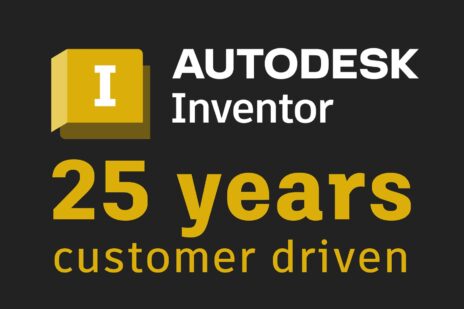
Autodesk Inventor was first released in 1999 and Jay Tedeschi has been around since the very beginning. In the second blog of our series, I talked with Jay about the honest history and evolution of Autodesk Inventor.

Jay has been at Autodesk for the last 23 years, which has given him special insight into the evolution and even creation of many of Autodesk’s leading software tools. In the 1990s, before Inventor existed, Autodesk had a dedicated 3D parametric tool called Designer. The platform eventually evolved into a mechanical desktop design tool. At the time, SolidWorks, by Jay’s own admission, was more advanced in mechanical design than any tool Autodesk had at their disposal. His team actually urged the head of manufacturing at the time to purchase SolidWorks and incorporate them into the design suite at Autodesk – what a different world that would’ve been. However, his urges were hushed in what he didn’t know at the time, was the beginning of Autodesk Inventor.
Jay and his team were invited out to test out an unknown program at a location in northern California. They all sat down in a room full of computers, each desk with 2 chairs. His team sat one to a desk, and a developer then sat behind them. On the screens was the beginnings of Autodesk Inventor, at the time codenamed Mustang. Jay recalls sitting at the desk and being given no instructions on how to operate the program in front of him. He asked, “what do you do to start?” to which the developer said, “well, what do you think you do to start?” It was at this point that Jay began to understand the methodology that went into designing Inventor, and even the methodology that now shapes Autodesk. More than he had ever seen it before, these developers were designing the program to be intuitive for the end user. They were trying to make Inventor a whole lot less clunky than the design tools of past.
His first impression using Inventor was one of excitement. Inventor, to his knowledge, was the first design tool to implement what he called a “unique methodology (adaptivity) for making geometric edits.” The program would segment the graphical data apart from the actual model data to allow the loading of complex assemblies in record time. Essentially, it allowed the graphics of the part to be loaded separately from the more clunky material and geometric data. Of all of the initial tools that Inventor brought into the design fields, this is what Jay feels was the most revolutionary to engineering workflow.

After Jay and I discussed the history and unveiling of Inventor, we discussed where he thinks the product stands today. SolidWorks is obviously the main competitor to Inventor, and naturally, there is some preference in the design community as to which program is better. From his perspective on the back end of Inventor, the tools available in Inventor are on par with any other tool out there. He did make note that depending on what you do, some functionality is going to change between programs. Inventor, he said, is better with wire harnesses and transcribing components across various programs, like AutoCAD electrical. This capability naturally comes with a company that has such a wide breadth of software capabilities. SolidWorks on the other hand demos well for direct modeling edits. These are just some of the points he stated that the software may be different and be able to do certain things better than the other, but from his perspective, their overall functionality is the same.
Inventor has changed a lot over the years, but the mentality of Autodesk design has stayed the same. The developers and engineers behind Inventor have retained a focus on making the software intuitive and easy to use – and that’s something Jay has seen from the very beginning.
If you would like to read the first post in our series with jay, you can click on the link below:


